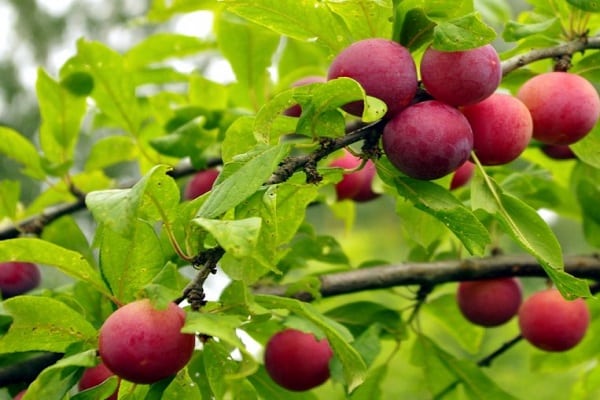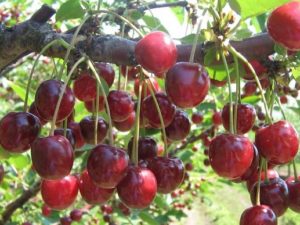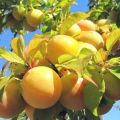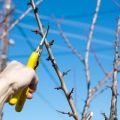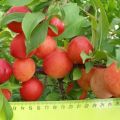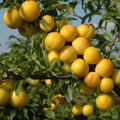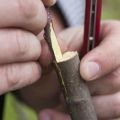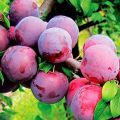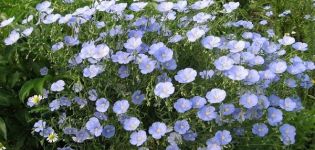Description of a hybrid of plum and cherry Omskaya nochka, history and features of cultivation
If we compare plums and cherries, then they are the closest relatives of stone fruit crops. With this in mind, a plum-cherry hybrid was created, which was derived from compatible materials for crossing. A well-known type of hybrid of plum and cherry is Omskaya nochka. The variety has a high yield, frost resistance and early maturity.
Origin story
Professor Hansen in the United States first received plum-cherry hybrids. The starting material is two trees - Bessey cherry and Japanese plum. From the cherry, the hybrid received unpretentious cultivation, and from the plum - the size and shape of the fruit, as well as taste.
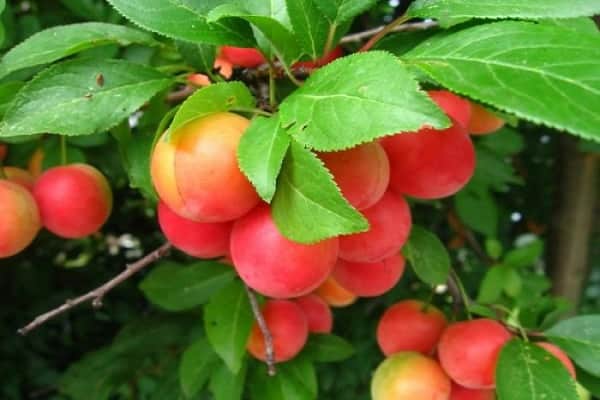
Cultivation and testing have shown that the hybrids give a rich harvest and tolerate sub-zero temperatures.
We continued breeding in Krasnoyarsk and Altai, successfully grown in the South Urals. Hybrids are used as a purely fruit crop, and as a result of selection, a number of rootstocks were obtained for seedlings of the plum genus. Hybrids are a promising crop.
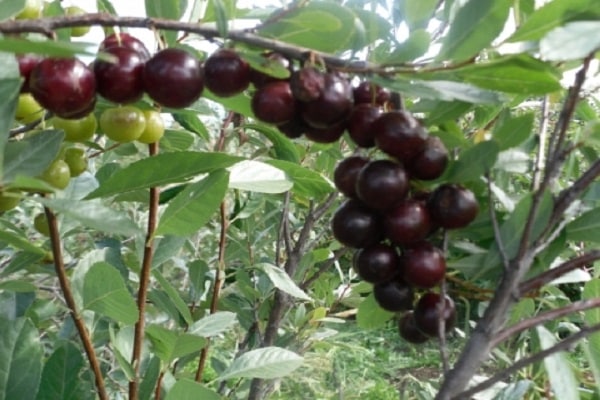
Description of the variety
Cherry Omsk reaches a height of 110-140 cm. Fruits are large, dark in color. The berry weight reaches 15 g. Ripening time is the second half of August. Produces a good harvest and is fast-growing. Abundant fruiting from the second year of growth.
In the description of the variety, it is indicated that the fruits have a soft and sweet flesh. The pollinator can be the Bessey variety.
The hybrids are resistant to damping, are short in stature and have a spreading crown. They are not damaged in winter, they can be completely covered with snow.
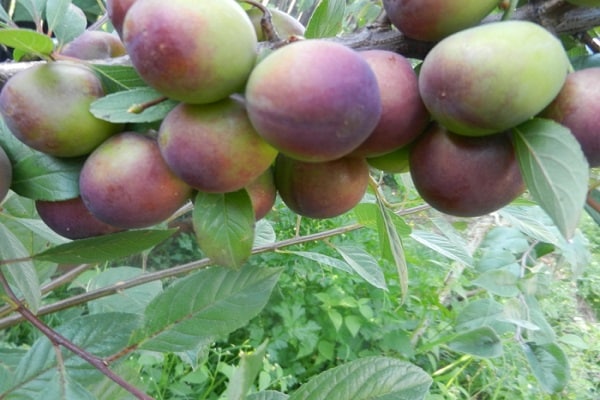
The hybrid blooms a little later than traditional plums, so they leave the spring frost. The yield is 30-40 kilograms per bush.
The root system is branched, therefore it winters well and tolerates drought.
The tree gives a rich harvest. The branches are sometimes overloaded and bent down to the ground.
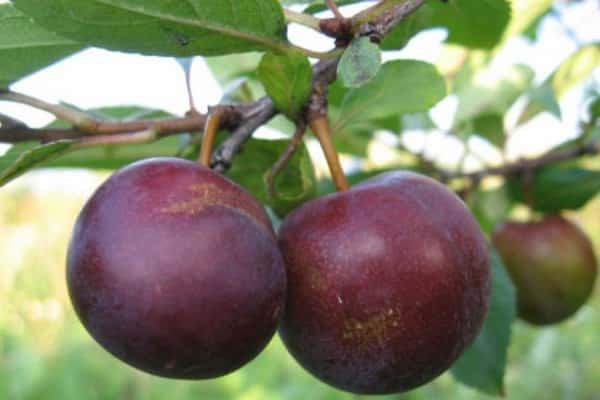
Features of planting and care
SVG hybrids are planted in pairs. In this case, plants are selected belonging to different varieties. Planting is carried out in specially created hills with drainage from small stones and a heat-insulating pillow. This protects the seedlings from freezing in winter and waterlogging in spring. If the soil is clayey, add sand.
A prerequisite is the introduction of organic fertilizers.
When choosing a place, give preference to the south side, near a residential or farm building. If planted on the north side, then surround it with tall shrubs that will protect the hybrid from the wind. Ideal neighborhood with conifers.
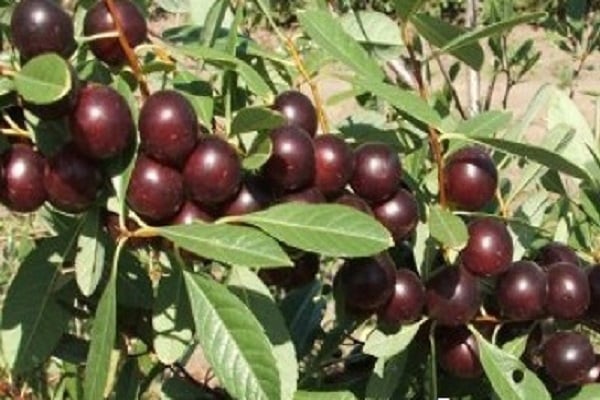
For quick rooting, plant the shrub in warm ground and water with warm, settled water.
At first, tie the tree to a support and form a near-stem circle, surrounded by an earthen roller.
The variety is self-fertile, therefore pollinators should be planted nearby, namely,
plums and cherries. The distance between hybrids must be at least 2 meters.

Care rules:
- Shrub care is the same as for a regular plum tree. There is no great need for irrigation, irrigate the shrubs as a last resort, when natural recharge is not enough due to the climate.
- Treatment with special compounds will help protect the plant from diseases and pests.
- Periodically feed the soil with a complex of micronutrients. Fertilizers - nitrogen, wood ash, potassium, fluorine. Most often, recharge is done in the autumn before the first frost. This will allow the tree to be nourished with useful trace elements and winter successfully.
- Periodically loosen the periosteal circle.
- Prune bushes and remove branches that do not bear fruit.
- If it was not possible to plant a seedling before the arrival of cold weather, then it is dropped into a container and stored in a cellar until favorable conditions arise.
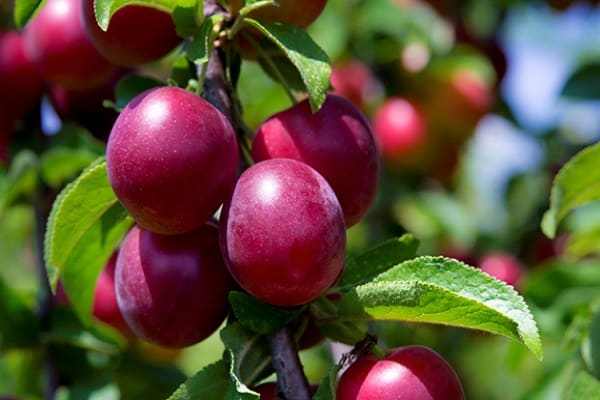
Disease and pest control
The main danger that lies in wait for stone fruits is moniliosis. The wood dries as if it were burnt. Initially, flowers are affected, then leaves and, ultimately, shoots are affected. When the disease manifests itself, the affected branches are cut and burned. For preventive purposes, they are sprayed with a Bordeaux mixture.
To protect against rodents, young seedlings are wrapped in non-woven synthetic fiber and covered with pine branches.
It is important to remember that this is not a cherry or a plum, but an independent culture that has personal characteristics of growth and development.
